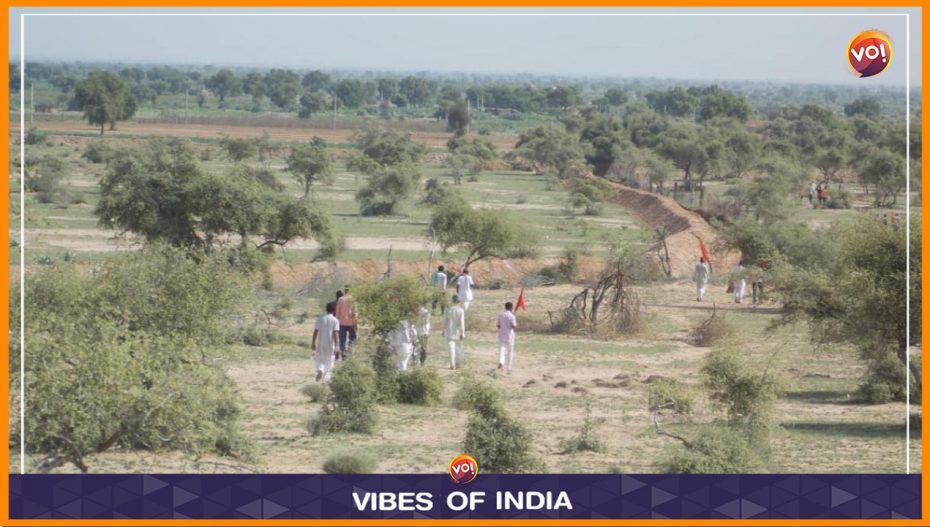A unique 225-km-long yatra taken out through remote villages and hamlets in western Rajasthan, which culminated at the Jaisalmer district headquarters earlier this week, added a powerful voice to the demand for protection of orans or sacred groves facing the threat of destruction with their land being allotted for renewable energy infrastructure and high-tension power lines.
Orans also form the natural habitat for India’s most critically endangered bird, the Great Indian Bustard (GIB), a protected species under the Wildlife Protection Act, which is also the State bird of Rajasthan. GIBs have died during the last few years because of collision with power lines, making this the most significant threat to the majestic birds.
The participants in the march on foot, who were mostly environmental activists and wildlife enthusiasts, highlighted the significance of orans, which are groves of trees with a rich diversity of traditional flora and fauna and water bodies, considered sacred and preserved by the locals. Named after local deities and medieval warriors, orans hold religious and social significance as small forest patches in the middle of the mighty Thar desert.
Environmental activist Sumer Singh Bhati led the yatra. He briefed that while orans ensured food and fodder for the community and the herds of camels, sheep and goats during drought, the allotment of their land to solar and wind energy, mining and other industries was affecting the ecology of the region. The land was also diverted for agriculture and other projects of the administration.
Tradition dictates that no tree or plant in the groves is cut and only seasonal grazing of livestock is allowed. However, solar power companies have resorted to arbitrary action and felled khejri and other trees to install their big projects. About 60 activists, who traversed Jaisalmer district for nine days with a camel cart, apprised the villagers of the issues involved in their agitation and raised awareness among the local communities.
The yatra started from the famous Degrai temple, situated inside an oran near Devikot and wound its way through about 50 villages and hamlets. The participants carried placards and banners explaining the impact of fast-paced industrialisation and encroachment of pasture land on the trees, wildlife, people’s livelihood and the local ecosystem.
Bhati, a resident of Sanwata village, who is actively involved in the oran protection movement, said the sacred groves were identified and protected by medieval rulers, but they were not properly entered into records during the settlement process after Independence. “The oran land’s allotment for setting up solar plants can be stopped if it is recognised as protected land in the gair mumkin category,” he said.
A memorandum submitted by the yatra participants to Jaisalmer Collector Tina Dabi pointed out that the power lines were being laid through orans despite the prohibition imposed by the National Green Tribunal, resulting in destruction of trees preserved for generations. It gave a list of nine large Oran lands in the district which should be declared as protected in the revenue records immediately.
Also Read: Amdavadis Have 1.3 Sq m Of Open Space Per Resident










